Hong Kong police have fired multiple rounds of tear gas to disperse protesters occupying roads around Ngau Tau Kok police station.
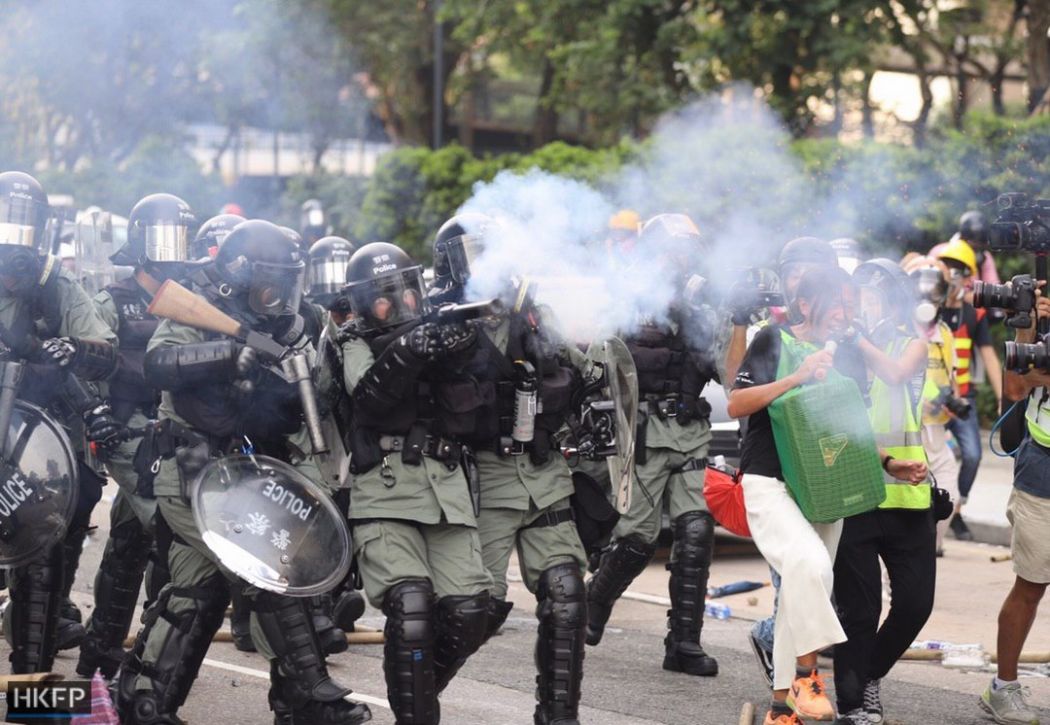
The action came towards the end of a largely peaceful protest, which was approved by police earlier this week.

Thousands joined a march from Tsun Yip Street Playground at 1pm in protest of the introduction of smart lampposts, which protesters fear may be used for surveillance.

Demonstrators also reiterated the five core demands of the anti-extradition law movement – including a full withdrawal of the bill, universal suffrage, and an independent investigation into alleged police brutality.
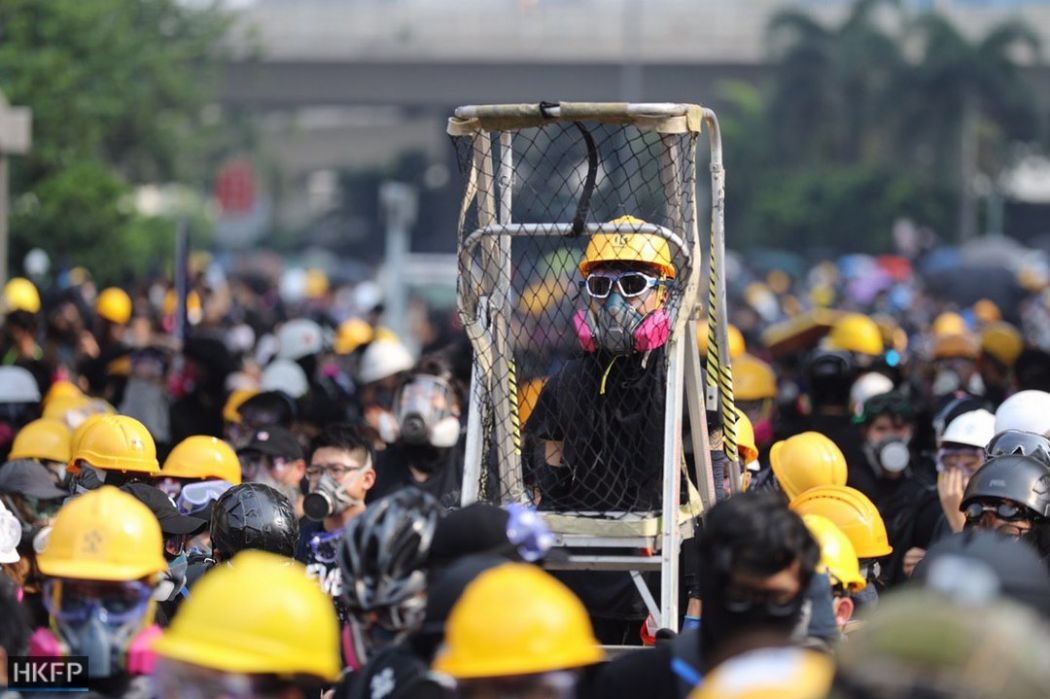
The smart lampposts, of which 50 are being piloted in Kwun Tong and the Kai Tak development zone, were installed in June.
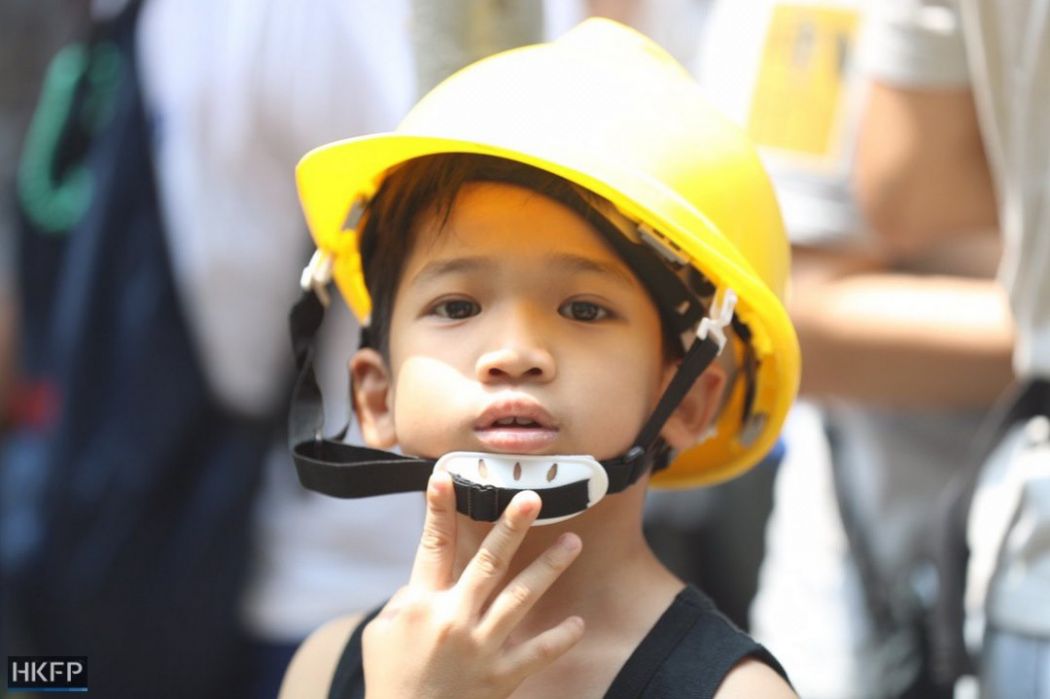
350 more are set to be rolled out as part of a three-year scheme. But critics have expressed fear over the potential for personal data to be collected and shared with the police or other departments.
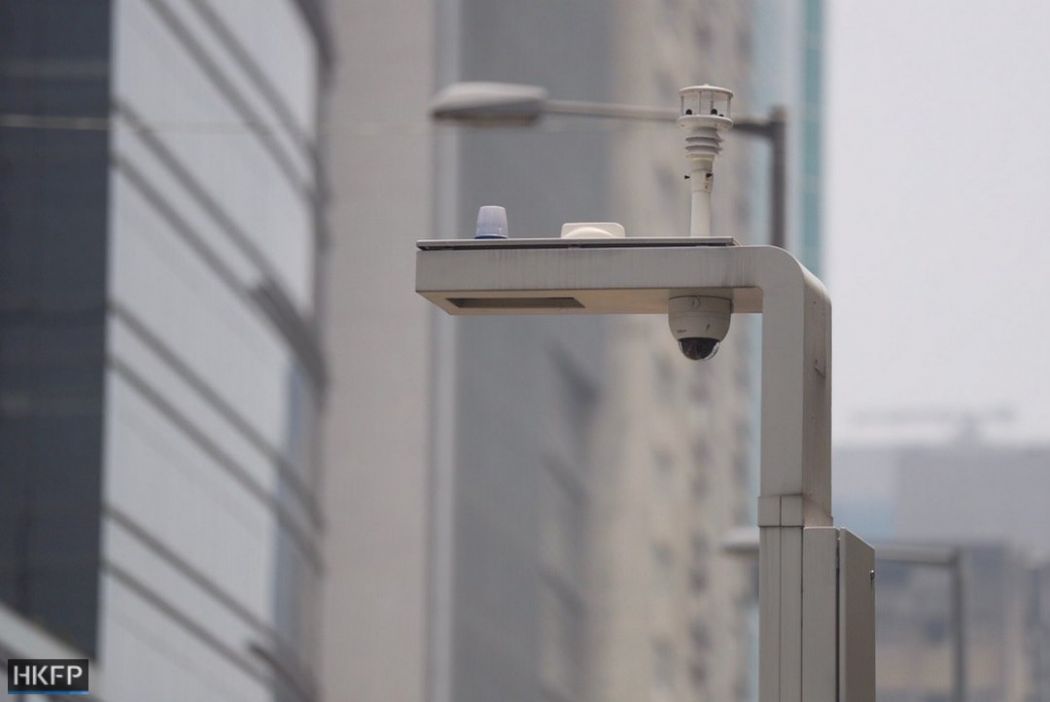
Their concerns come amid reports of travellers having their phones and computers searched by mainland authorities at the Shenzhen and Hong Kong border.

The government has said the devices do not have any facial recognition functions – only sensors, data connectivity and cameras – and data will not be shared with third parties for the purposes of identification.

A 26-year-old graphic designer, who gave his name as Nick, told HKFP that public opposition to the lampposts has been compounded by a lack of trust in the government to protect the privacy of city residents.

“Nobody trusts the government due to what has happened in the past few months,” he said. “I think that [smart lampposts are] just a trick the government is using to spy on us. It invades our privacy.”
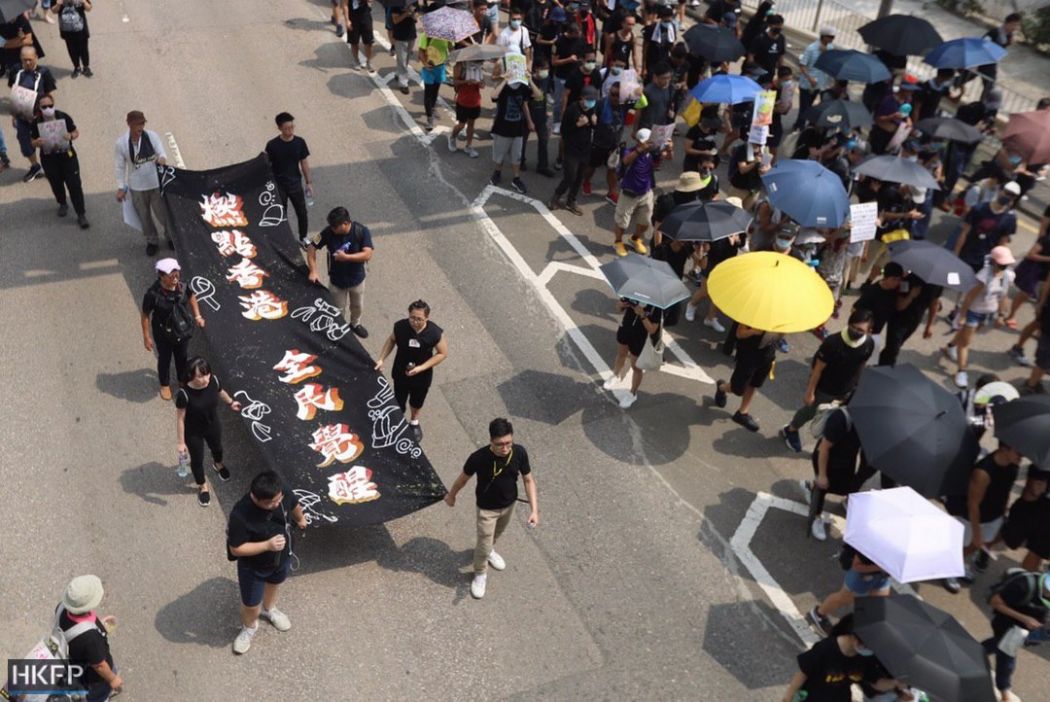
Asked why Kwun Tong had been chosen as a place to pilot the scheme, Nick said he believed it was because the area has an older demographic who may not be as informed about technology as young people.

“It could be an easy place to experiment or promote this kind of [spyware] on the streets,” he said.
Crowds chant “light up Hong Kong, awakening of the whole people” along Hoi Bun Road.
In full: https://t.co/kmLJLFTZhx#hongkong #antiELAB #china pic.twitter.com/Z0VMZUZtXl
— Hong Kong Free Press (@HongKongFP) August 24, 2019

Leo Wong, a 21-year-old university student, told HKFP he decided to join Saturday’s rally to call on the government to agree to protesters’ five demands.

Asked if he was prepared to continue protesting for weeks to come, he said: “In fact, people are very tired because this is the [12th] week… But, as you can see, we are still really passionate because we’re fighting for something we’ve been promised in the Basic Law. But every week the police come out and hurt our people. This is what is driving us to take to the streets again and again.”
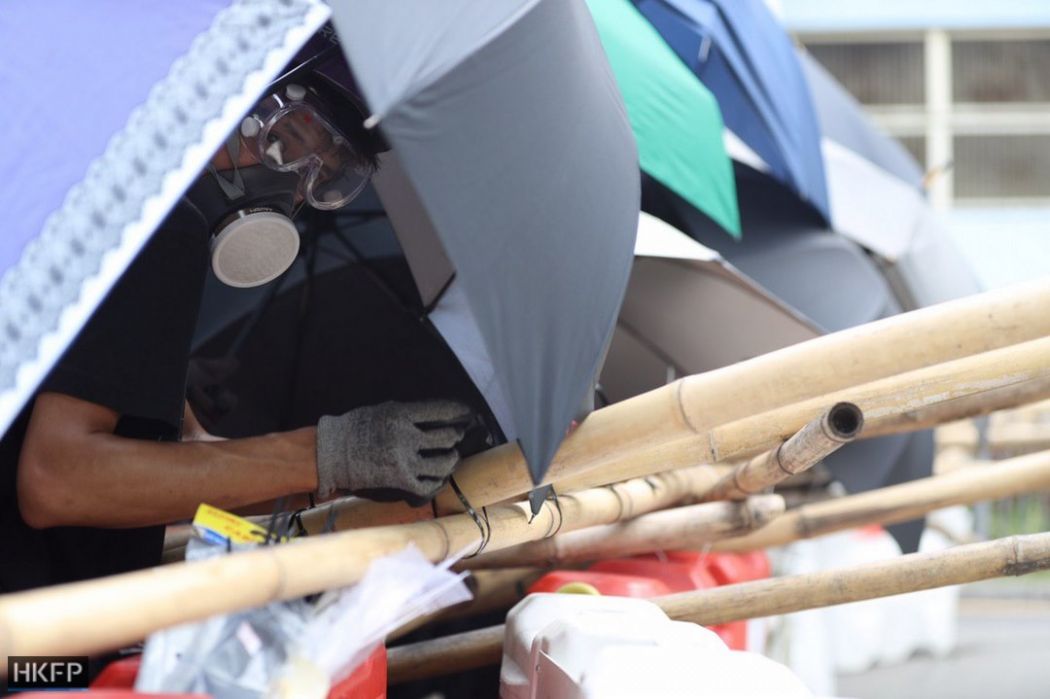
The rally quickly descended into a road occupation at around 2.30pm when a break off group erected makeshift barricades using pointed bamboo sticks and zip-tied metal fences on Wai Yip Street.
Protesters are playing a looped audio clip of Chief Executive Carrie Lam saying jailed activist Edward Leung’s slogan “Liberate Hong Kong, revolution of our times” on a loudspeaker.
In full: https://t.co/kmLJLFCnSX. #hongkong #antiELAB #china pic.twitter.com/yNmOrzXq9x
— Hong Kong Free Press (@HongKongFP) August 24, 2019

The action prompted riot police to form a line of defence around the police station.

Meanwhile, groups of protesters wearing all-black dismantled rows of smart lampposts around the march route.

After 4.30pm, police suspended reporting room services at Ngau Tau Kok police station, as they urged protesters to disperse.

The government released a statement shortly after condemning the vandalism: “Some violent protesters maliciously damaged lampposts on Sheung Yuet Road, Kwun Tong and vandalised government properties, neglecting other road users’ safety.”
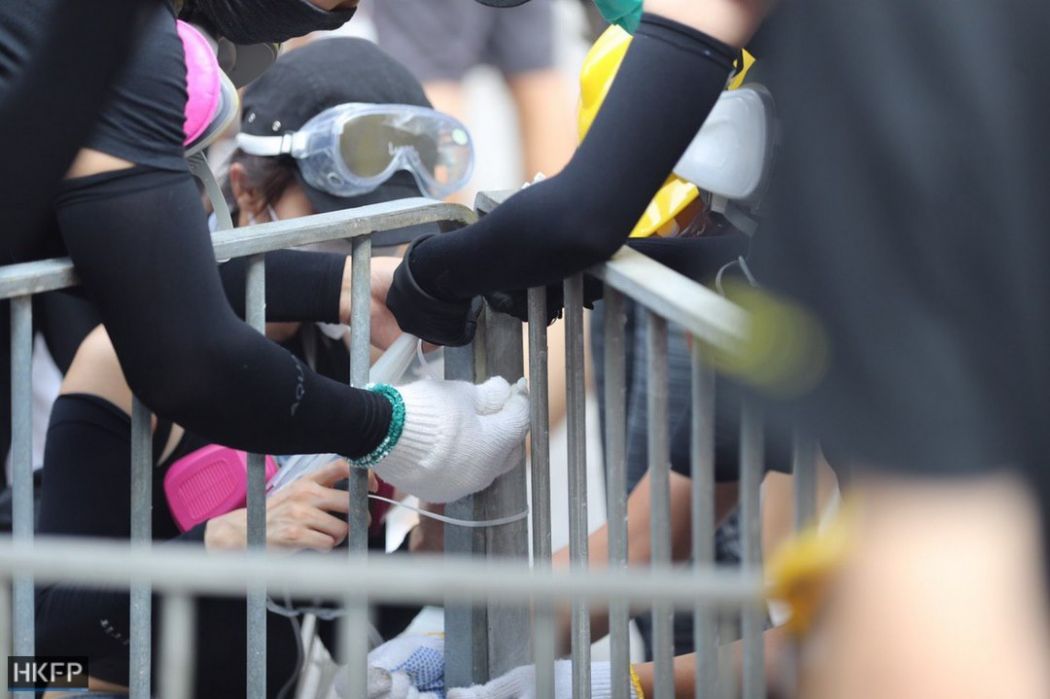
“Police warn the protesters concerned to stop all illegal acts. Police appeal to other peaceful protesters to leave the area immediately and strongly condemn all unlawful acts,” it continued.
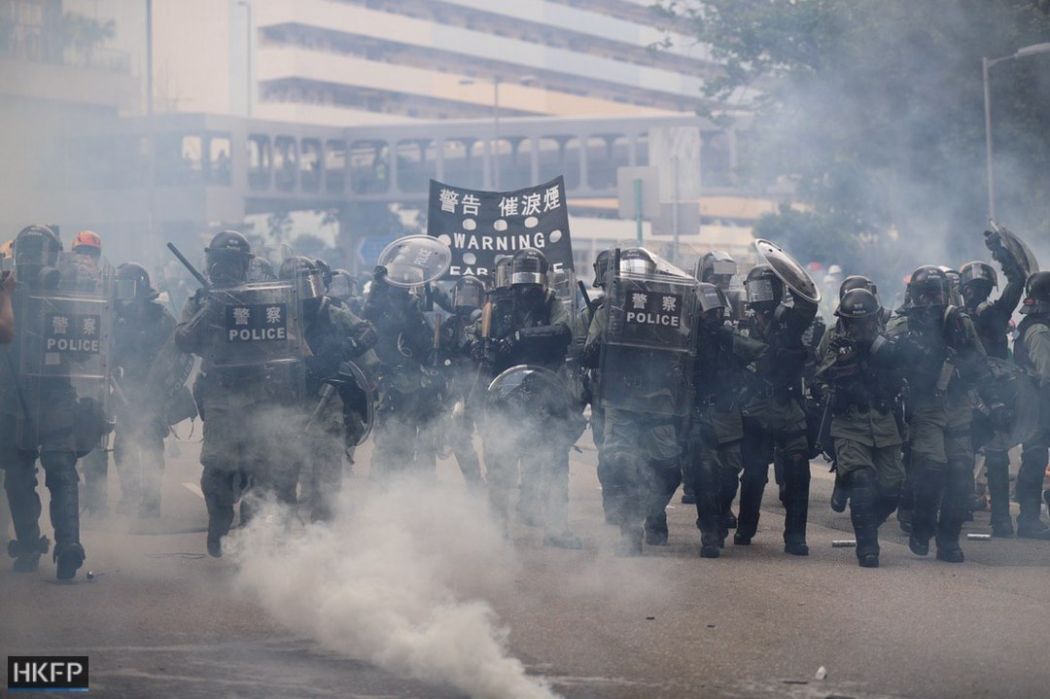
Multiple rounds of tear gas were fired from around 4:40pm as police swept into the crowd and made multiple arrests.

As riot police pushed back lines of protesters on Wai Yip Street, some rushed onto an adjacent overpass to throw rocks and bamboo poles at officers below, triggering more volleys of tear gas.

Police and protesters fought running battles as night fell.
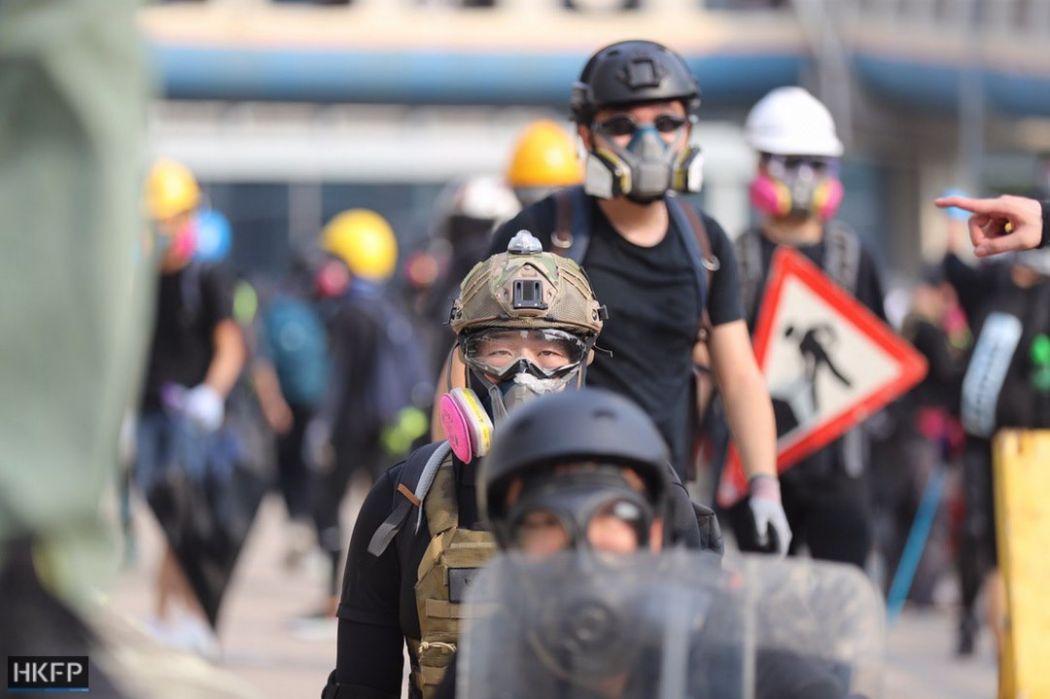
According to the Hospital Authority, six people were sent to hospital, with one male in a serious condition and the others in a stable condition.

Local media reported that one man suffered an injury to his left eye, after he was shot with a suspected police rubber bullet.
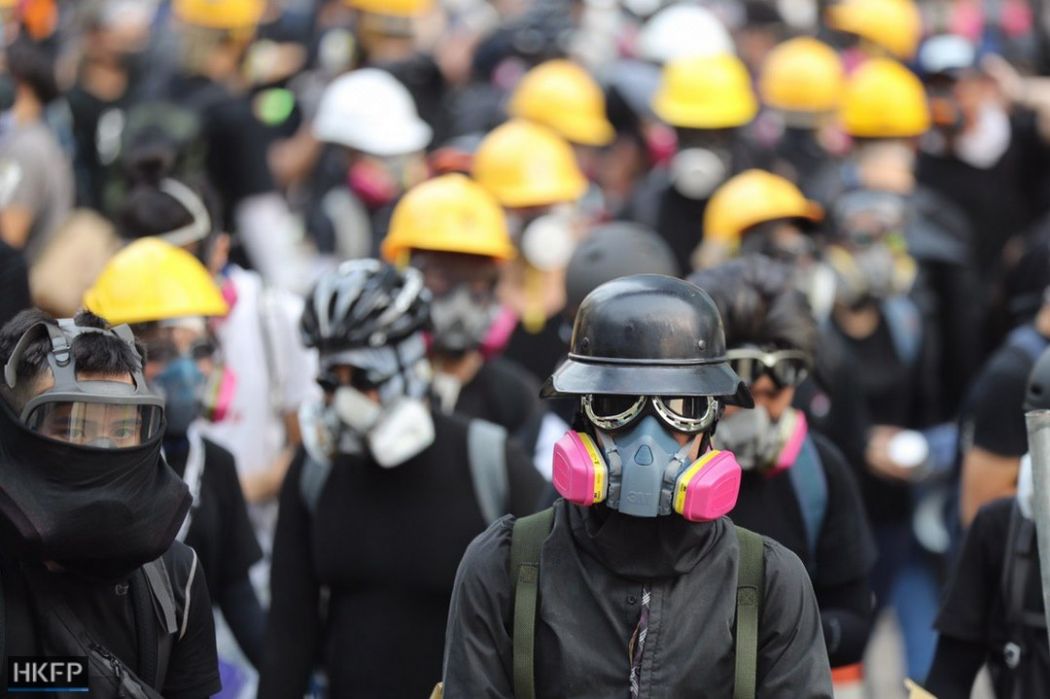
In a Saturday afternoon Facebook post, Chief Executive Carrie Lam defended her proposal to set up a “platform for dialogue” following weeks of unrest: “I know setting up a ‘platform for dialogue’ has led to suspicion and criticism from society. I know in the current conundrum, society is frustrated; some are dissatisfied and even angry that the government cannot meet the ‘five demands’.”
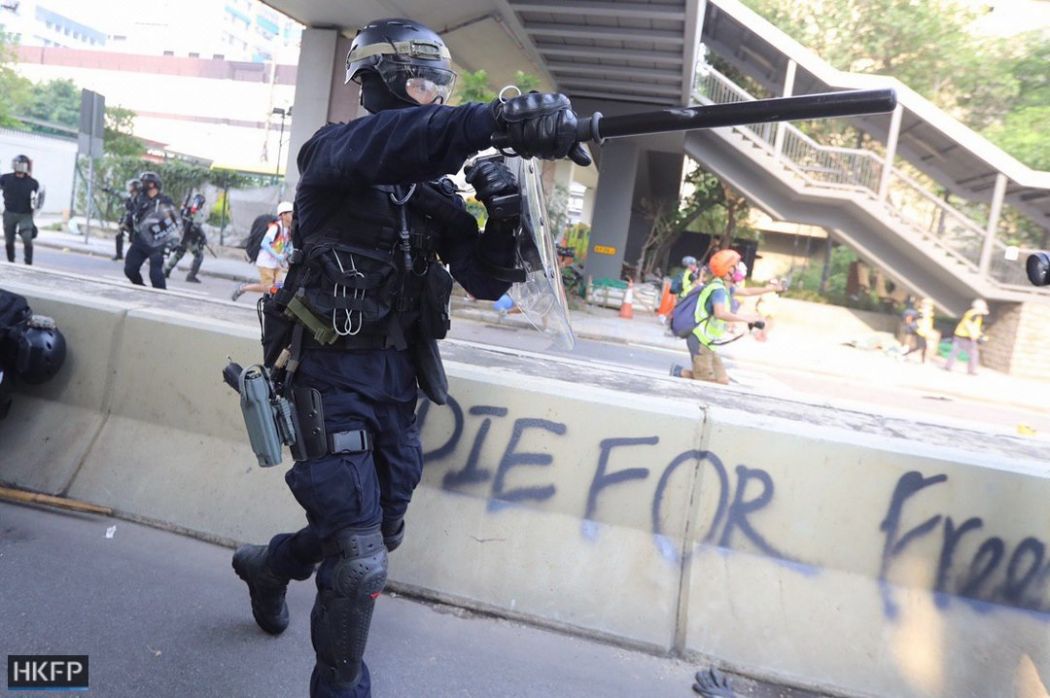
“I don’t expect that dialogue can untie knots, stop clashes, or provide a solution to all problems; but continued resistance is not a way out… After two months, everyone is tired. Can we sit down and talk?”
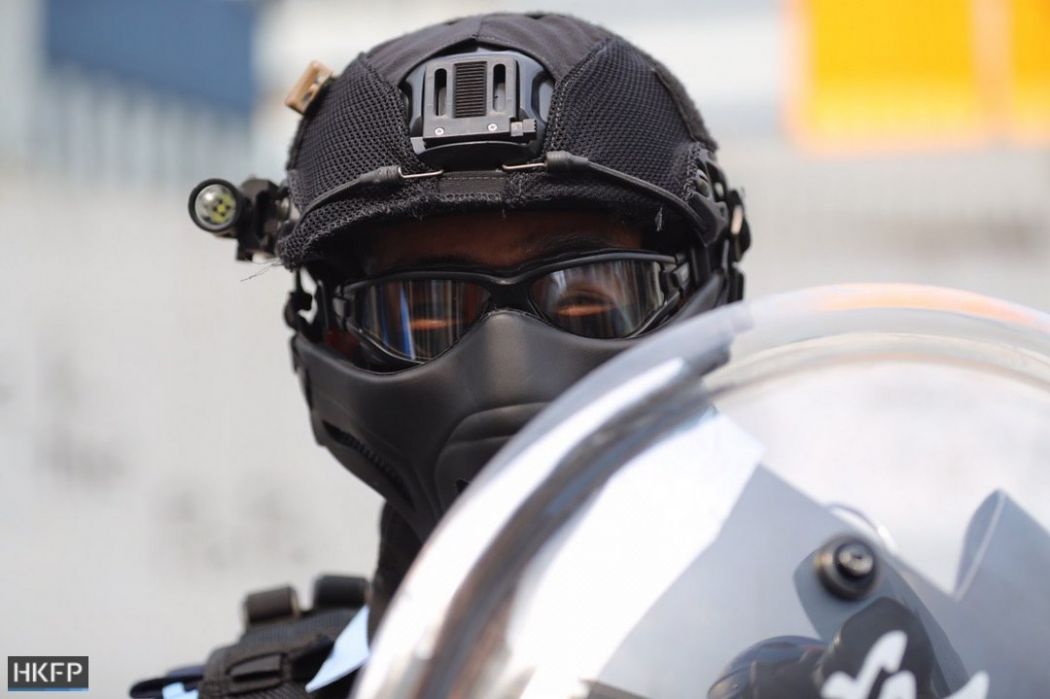
Also on Saturday, the MTR announced that four stations in the vicinity the planned protest would close after 12pm. In an unprecedented move, Lam Tin, Kwun Tong, Ngau Tau Kok and Kowloon Bay remained closed throughout the afternoon and evening, after the largely government-owned transit firm won a court injunction.
More to follow.
Hong Kong Free Press relies on direct reader support. Help safeguard independent journalism and press freedom as we invest more in freelancers, overtime, safety gear & insurance during this summer’s protests. 10 ways to support us.

